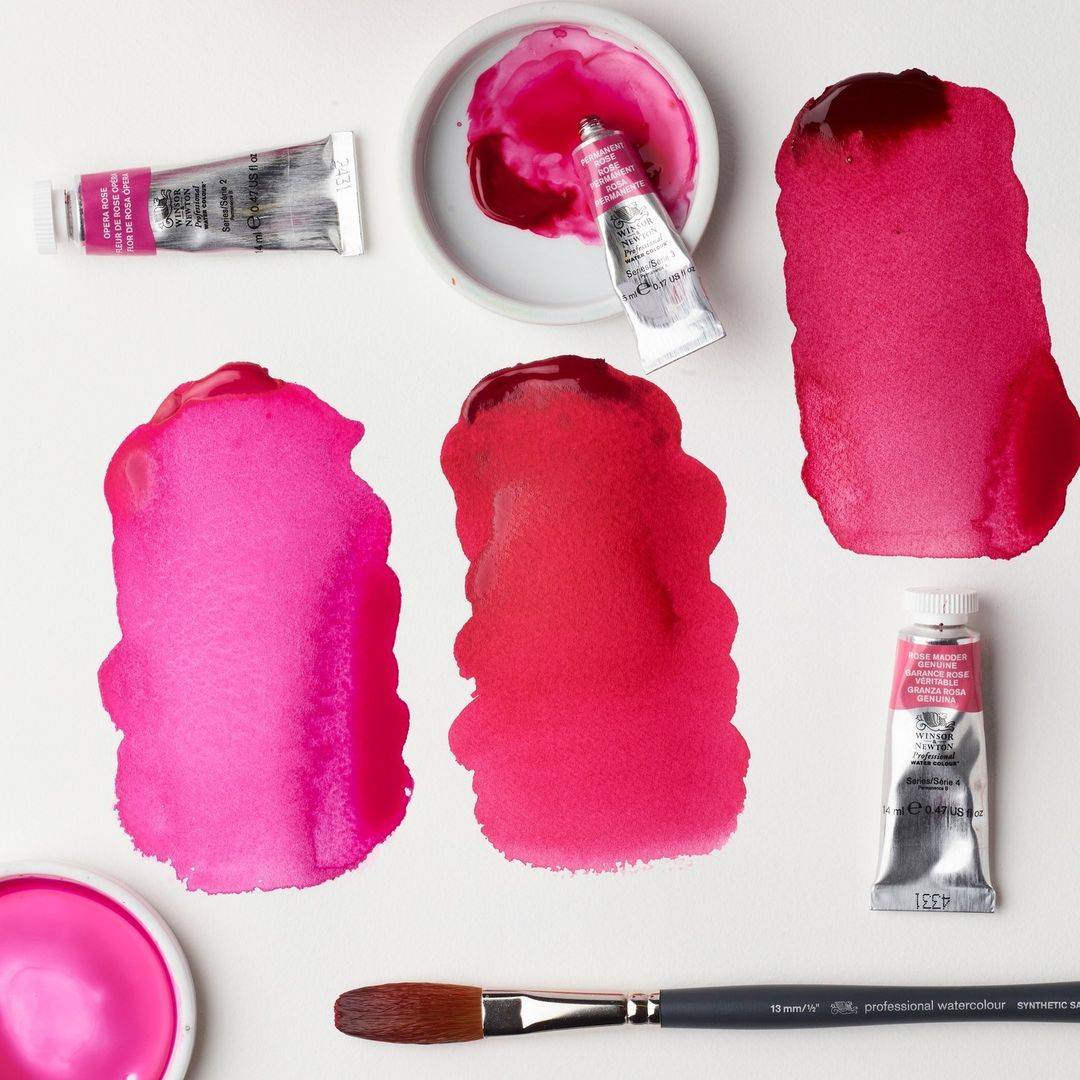Cherry blossom, carnations, roses and romance. Barbie, punk and political pantsuits. Pink: it’s one of the most popular colours to grace the modern world, but its rich history is much punchier than its pretty façade.
Come with us on a cultural journey as we explore the many twists and turns that belong to the history of pink.
Budding Origins
To the natural eye, pink is made up of a combination of red and purple light from both ends of the rainbow that our brains make out as one singular colour. On a paint palette, pink is a hue – a tint of red made mixed with white. It’s therefore no surprise that pink took some time to make its way into everyday language.
The colour owes its first monikers to plants, as pink is one of the most common colours of flowers and has long been associated with their qualities of beauty and grace in cultures around the world. For example, the term ‘rosy’ derives from the Latin for ‘roseus’ or ‘rose’. The delicate pale pink Japanese cherry blossom petals have for thousands of years symbolised spiritual rebirth when they fall each year. And though pink does not appear on its national flag, Mexico’s magenta-toned ‘rosa mexicano’ colour derives from the bougainvillea flower and is synonymous with the country’s landscape and architecture. The vibrant colour is intrinsic to Mexican craftsmanship, embellishing everything from traditional embroidery to toys, woven baskets to architecture, and even celebratory sweets such as sugar skulls during Día de los Muertos. The name ‘rosa mexicano’ itself was coined by Mexican fashion designer and painter Ramón Valdiosera in 1949. However, the name ‘pink’ was not universally in play until the 17th century, when a Greek botanist used the term to describe the ruffled rims of carnations.
Masculinity and High Society
Contrary to popular belief, pink was considered a masculine colour for some time. Red has long been seen as the shade of masculinity, linked with power and warfare due to its associations with fire and blood, and commonly worn by samurai in Japan and soldiers in China and Europe. It was therefore not uncommon to see men from high society wearing pink, as it was considered the colour closest to red.
Pink in fashion, decorative arts and interior design was popularised during the 18th century and worn by both men and women of the European bourgeoisie. Wealthy and influential noblemen, such as those in Louis XVI’s French court, wore rose-coloured embroidered silk coats, and Louis XVI’s mistress Madame de Pompadour had her own tint of pink named after her called ‘rose pompadour’. In literature, French author Xavier de Maistre put forward the idea in his 1794 book A Journey Around My Room that pink and white bedrooms decorated for men would lighten their moods. Over in the arts, 18th century paintings tended to be characterised by a soft pink tone that leant itself to the opulent romantic landscapes and costumes in oil paintings, such as those by French Rococo painters François Boucher and Jean-Honoré Fragonard.
Childhood and Femininity
Pink would later become a diminutive of red, bestowed on young men and boys, and by the early 20th century light pinks and blues were seen as neutral colours reserved for children and babies. Later, the distinction between the two genders began to form, albeit initially rather divisively. In 1918 an article from children’s magazine Earnshaw’s stated that the ‘generally accepted rule is pink for the boys, and blue for the girls. The reason is that pink, being a more decided and stronger color, is more suitable for the boy, while blue, which is more delicate and dainty, is prettier for the girl.’ In 1927, a survey by Time magazine in 1927 revealed that large-scale department stores across US cities received mixed results when relating to the gender-specifics of pink, with stores like Macy’s opting for pink for girls and blue for boys, and Marshall Field’s the opposite
It was only after World War II that pink’s transition to feminine began. Owing to a focus on gender-conforming roles in the family, combined with the rise of mass consumerism, brands and marketing, firms began to denote pink as for women and baby girls. This took off, bolstered by the success of female icons wearing the colour pink, such as First Lady Jackie Kennedy’s wearing a raspberry-pink Chanel dress suit and pillbox hat when her husband was assassinated in 1963. And as it became common for parents to find out the gender of their children from the 1980s onwards, retailers across the world started to create gender-specific clothes, toys and gifts. Cue the uprising of dolls and pink garments from Polly Pocket to Barbie – even today, the latter’s parent company owns the copyright to a shade called ‘Barbie Pink’.
Pop Art, Punk and Social Media
By the latter 20th century pink transcended into being a fun, bold colour: with attitude. The pop art movement emblazoned bold neon pinks in many of its designs, helping to popularise the colour again in art. The bold hot-pink fuchsia teamed with neon yellow and acid green in pop artists Andy Warhol’s 1967 Marilyn series and James Gill’s later 2013 serigraphy works encapsulated a new kind of brash, bold and abstract glamour to pink. And since the 1970s, Japanese kawaii (‘cute’) culture uses pink as a bold form of cutesy in kitsch, playful brands such as Hello Kitty and Pokémon.
Pink would then take a transgressive turn in alternative scenes. In 1980 the first issue of British magazine i-D was released in a bold black and pink combination that would come to define punk fashion. Musicians popularised pink in the grunge scene, such as Courtney Love wielding her iconic pink Stratocaster guitar on stage and donning pink-hued babydoll dresses.
By the 21st century ‘Tumblr pink’ or ‘millennial pink’ took centre-stage in the era of social media, and by the time rose quartz became Pantone’s colour of the year in 2016 it had already become one of society’s most in-demand colours, often sought out in accessory format, like the Rose Gold iPhone case launched in 2015. Creatives such as filmmaker Wes Anderson have since romanticised the retro with the colour pink, transforming the reality of the past into quirky, dreamlike set designs such as in his stylised 2014 feature The Grand Budapest Hotel.
Political Power
Pink is rising fast as the colour of disruptive political activism, particularly regarding that of women’s rights and healthcare. In reconstructing pink’s feminine connotations to be a force for good, the Breast Cancer Awareness trust released its pink ribbon as an emblem aimed at breaking the taboo around the subject in the early 1990s. In 2002, CodePink, a female-initiated grassroots organisation was founded to protest against the Iraq war and has since conducted multiple anti-war protests. In 2017 – in light of an egregious comment by Donald Trump – pink pussycat hats were worn in marches opposing his presidency. During the same year pink pantsuits were donned in protest by Supermajority, a US-based organisation that promotes protecting women’s rights and gender equality, founded by members of Planned Parenthood, Black Lives Matter and the National Domestic Workers alliance, and supported by politicians and celebrities alike.
In the past, pink has been gentle and beautiful, neutral and baby-like. But today, pink has a lot to say, and it looks to be not going anywhere anytime soon.



